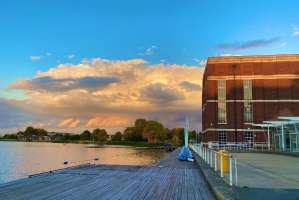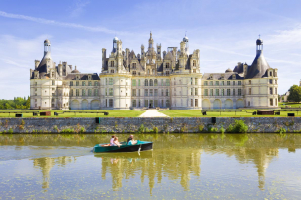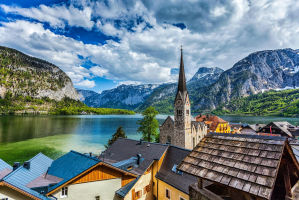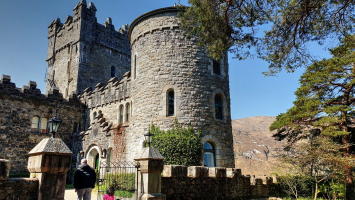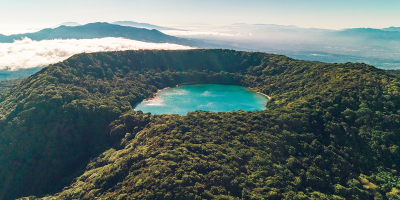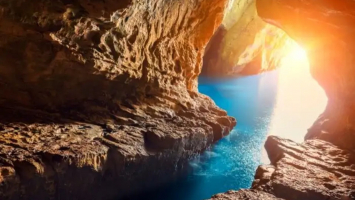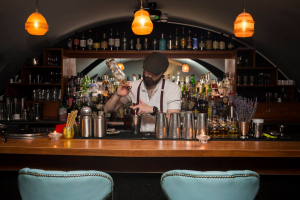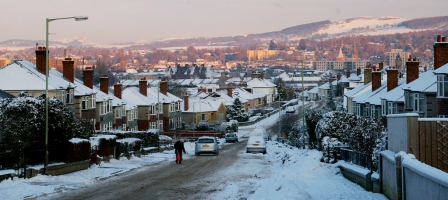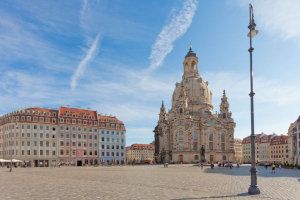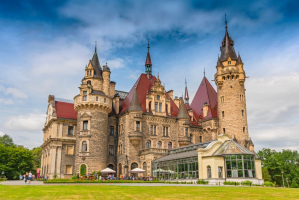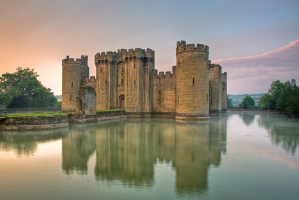Top 11 Best Castles in Scotland To Visit
Childhood is associated with stories of princes and princesses. The setting where those stories take place is magnificent and magnificent castles. Actually, ... read more...there are many castles in the world associated with nobility. Let's find out with Toplist the best castles in Scotland to visit!
-
One of the best castles in Scotland to visit is the Bothwell Castle. In South Lanarkshire, Scotland, above a bend in the River Clyde, Bothwell Castle is a sizable medieval fortress. It lies around 16 km southeast of Glasgow, between Bothwell and Uddingston. The clan Murray's forefathers started building the fortress in the 13th century to protect a crucial Clyde crossing. Bothwell, which changed hands numerous times, was crucial to Scotland's independence struggles.
Although the enormous cylindrical donjon was constructed in the 13th century, it was severely damaged during several sieges before the rest of the castle was finished. The castle was expanded during construction in the early 15th century, but by the 18th century, it had been abandoned. The current ruin is rectangular, with the later Great Hall to the east and the remnants of the donjon to the west. Round towers are located at the southeast and southwest corners of the courtyard, which is surrounded by lengthy curtain walls. Scottish archaeologist William Douglas Simpson referred to the castle as one of the "most prominent secular constructions of the Middle Ages in Scotland".
Even though the castle was never finished according to plan, the fact that it has a round keep gives it in common with the fortresses of Coucy, Kildrummy, and Dirleton. The keep, which is now in ruins, once had walls that were 4.6 meters thick and measured 25 meters high and 19 meters in diameter.
Location: Bothwell, South Lanarkshire, Scotland
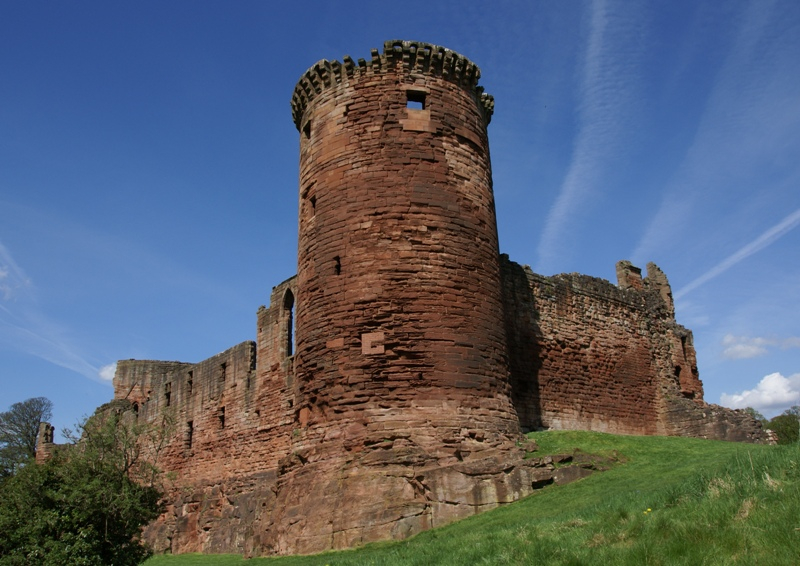
Photo: wikipedia 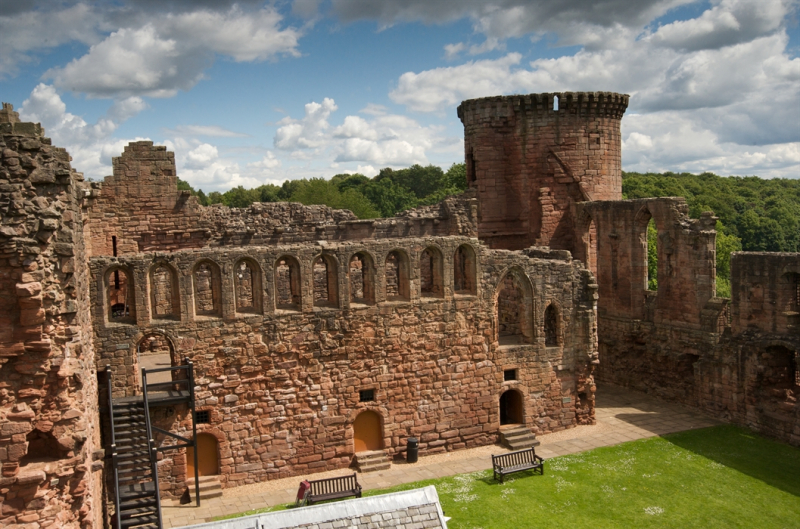
Photo: visitscotland.com -
The ruins of the five-story Carleton Castle, built in the fifteenth century, are prominently situated above the village of Lendalfoot, which is situated on Carleton Bay in the parish of Colmonell in what is now South Ayrshire, some nine kilometers (six miles) south of Girvan, Scotland.
The five-story Carleton Castle, which was originally owned by the Cathcarts of Killochan, is a Category B Listed Building that overlooks the community near the Games Loup cliffs. Without the parapet and a collapsed section of the wall that has been partially repaired at a more recent period with internal plastering applied that suggests a later usage as a dwelling or store, the long-abandoned tower ruins are still standing.
According to OS maps, pigsties-style remains that were still covered in roofs in the 19th century still exist at the base of the tower. The entrance to the oblong tower itself was originally through a door at the first-floor level with a wooden ladder or stair. This small tower only had one private apartment, which was reached through a stair from a window in the great hall. There may have been a staircase inside the 1.8 m thick (entry wall) that led to the cellar, great hall, and possibly the kitchen level. A wheel stair connected the hall to the cellar in the southeast corner.
Location: Lendalfoot, South Ayrshire, Scotland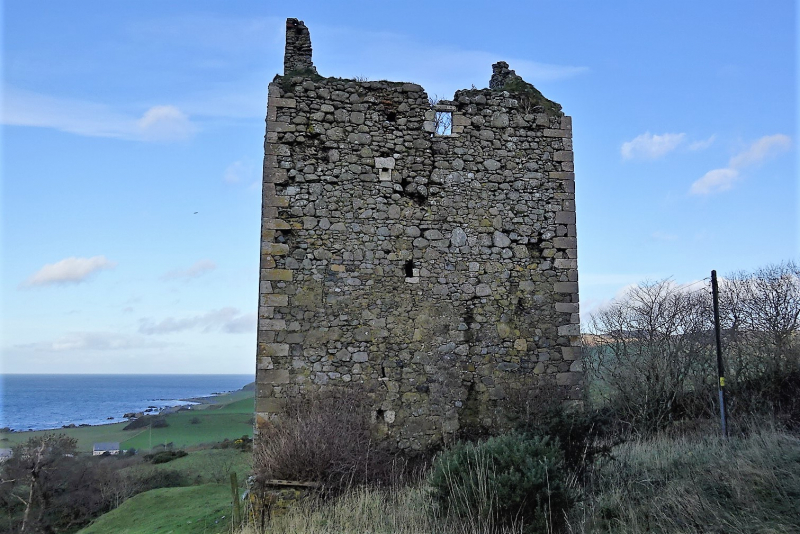
Photo: wikipedia 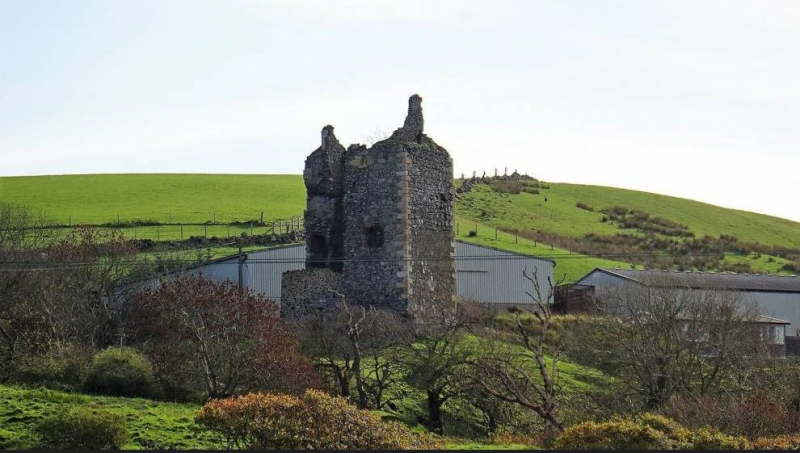
Photo: ayrshireandarran.com -
The next position on the list of the best castles in Scotland to visit is Urquhart Castle. In the Scottish Highlands, close to Loch Ness, lies a ruin known as Urquhart Castle.
The castle is one of the biggest in Scotland and is located on a cliff with a view of Loch Ness. It was protected by a drawbridge and a ditch and was accessed from the west. The castle's structures were arranged around two large enclosures on the water. The majority of the more substantial buildings, including the gatehouse and the five-story Grant Tower at the north end of the castle, are located in the northern enclosure, also known as the Nether Bailey.
Although they were constructed on the site of an early medieval stronghold, the current ruins date from the 13th to the 16th centuries. Urquhart, which was established in the 13th century, participated in the 14th-century Wars of Scottish Independence. The MacDonald Earls of Ross often invaded the castle while it was being held as a royal residence. Although the Clan Grant received the castle in 1509, hostilities with the MacDonalds persisted.
Location: Near Drumnadrochit, Highland, Scotland
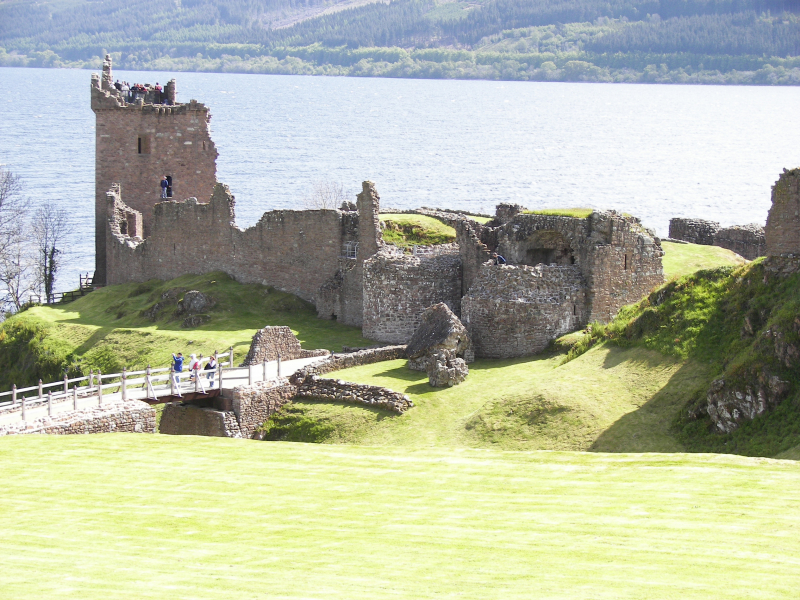
Photo: wikipedia 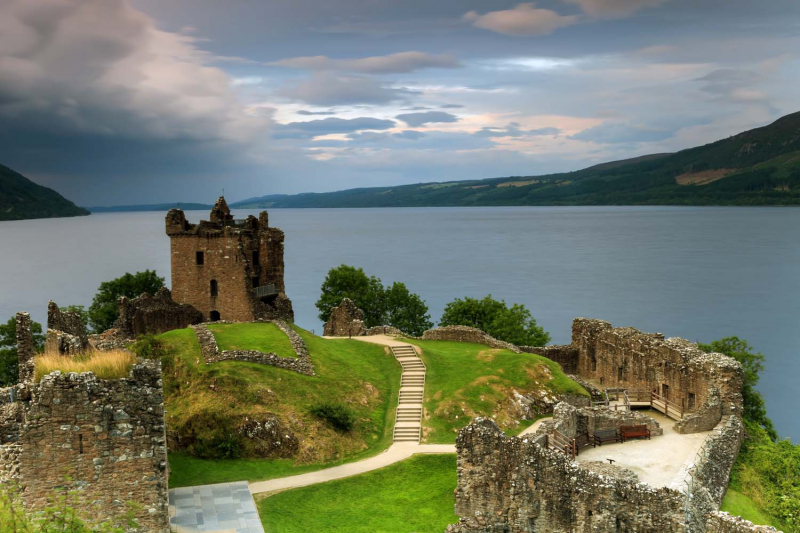
Photo: outdooractive.com -
In Aberdeenshire, Scotland, Kildrummy Castle is a disused castle that lies close to Kildrummy. It was the home of the Earls of Mar and is one of the largest 13th-century castles still standing in eastern Scotland, albeit being in ruins. As a scheduled ancient monument open to the public, it is currently held by Historic Environment Scotland and has gardens that are listed in the Inventory of Gardens and Designed Landscapes in Scotland.
The structure of Kildrummy Castle is "shield-shaped," with numerous individual towers. The opposing side of the castle, where the walls come to a point and were previously guarded by a massive twin-towered gatehouse, also has a flat side that looks out over a steep valley. The Snow Tower, a keep that was taller than the other towers and was constructed in the French style like Bothwell Castle, was another feature of the castle. The castle was shielded by extensive earthworks, such as the ravine and a dry moat. The majority of the castle's lower-story walls and its foundations may both be seen today. In 1925, archeological digs unearthed combat remains and ornate stone flooring.
The Ministry of Works received the castle in 1951, and its successor organization, Historic Environment Scotland, now owns it. Both the Kildrummy Castle gardens and the quarry where the stone for the castle was mined are accessible to the general public. On the former estate, with a view of the ruin, a hotel (the Kildrummy Castle Hotel) was constructed. The Scottish Sculpture Open, also referred to as the Kildrummy Open, was held at Kildrummy Castle from 1981 to 1997 and was run by the Scottish Sculpture Workshop.
Location: Kildrummy, in Aberdeenshire, Scotland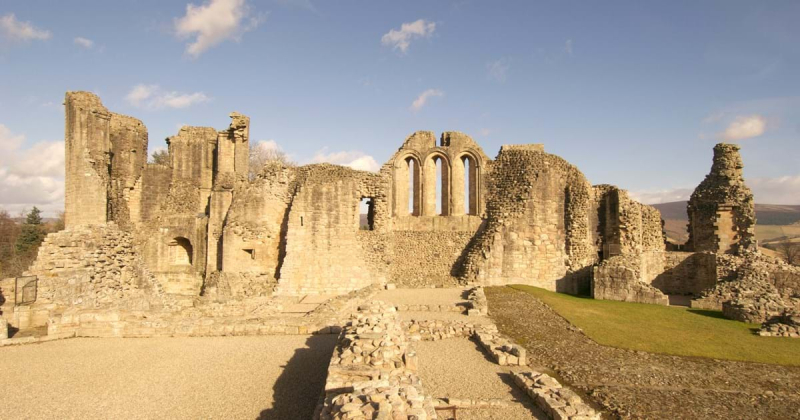
Photo: historicenvironment.scot 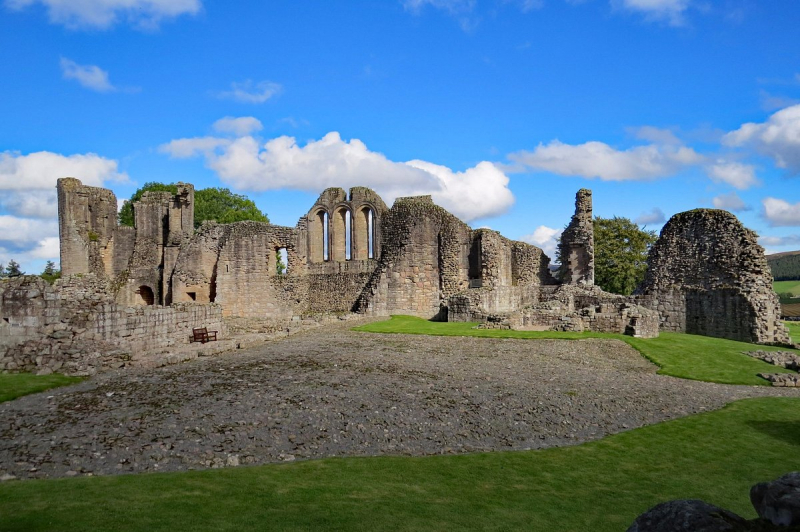
Photo: tripadvisor.com -
Originally constructed in the 13th century, Caerlaverock Castle is a moated triangular structure. It is situated on the edge of the Caerlaverock National Nature Reserve on the southern coast of Scotland, eleven kilometers (seven miles) south of Dumfries. From the 13th century until the castle's abandonment in the 17th century, Caerlaverock served as the Maxwell family's bastion.
Throughout the Wars of Scottish Independence, it was besieged by the English and partially destroyed and rebuilt multiple times. This occurred in the 14th and 15th centuries. When the Maxwells were made Earls of Nithsdale in the 17th century, they added a new residence inside the walls that has been dubbed "the most ambitious early classical domestic architecture in Scotland." The last time the castle was besieged was in 1640, after which it was left in ruins. The castle has been destroyed and rebuilt numerous times, yet it still has the recognizable triangle layout that was created in the 13th century. Early on, Caerlaverock Castle was constructed to regulate trade.
Caerlaverock Castle is a recognized landmark in the Nith Estuary National Picturesque Area, which is preserved for its scenic beauty. The 55 square kilometer Caerlaverock National Nature Reserve, which is made up of salt marsh, mudflats, and grazing area, has the castle at its northernmost point. For wading species, such as the barnacle goose, and ducks, it is a crucial wintering location.
Location: Castle Road End, Dumfries DG1 4RU, Scotland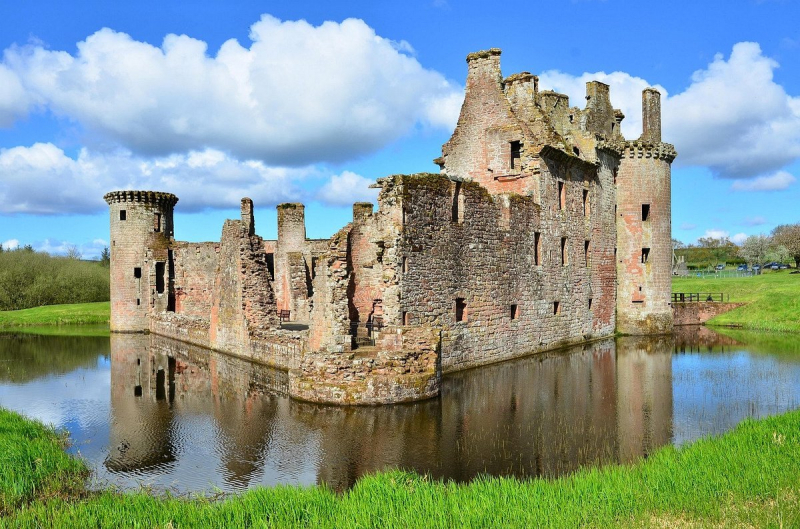
Photo: tripadvisor.co.uk 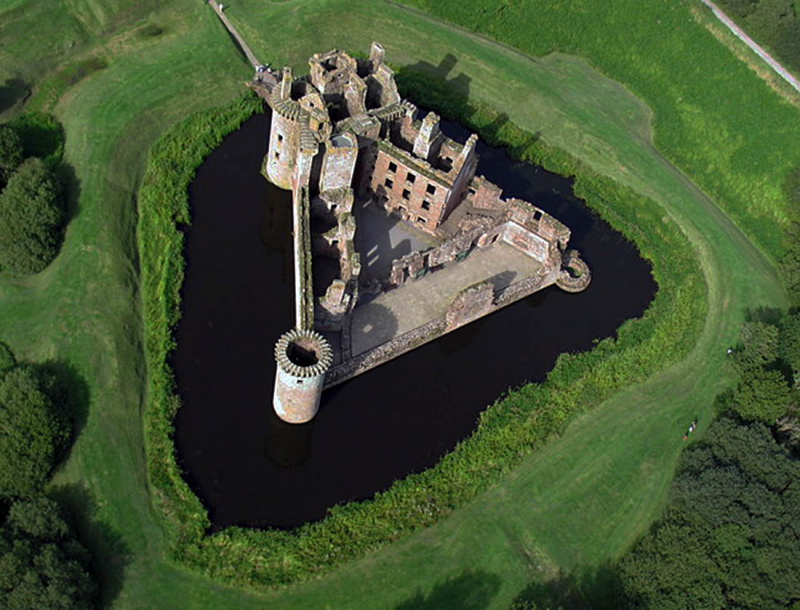
Photo: wikipedia.org -
One of Scotland's biggest and most significant castles in terms of both history and architecture is Stirling Castle, which is situated in Stirling. The Stirling Sill geological formation includes the intrusive crag known as Castle Hill, which is where the castle is located. It has a strong defensive posture because of the sheer cliffs around it on three sides. It has been a significant fortification in the area since ancient times due to its strategic location, which guards what was, until the 1890s, the farthest downstream crossing of the River Forth.
The majority of the castle's main structures are from the fifteenth and sixteenth century. A few buildings from the fourteenth century still stand, although the town's outside defenses date from the early eighteenth century. Stirling Castle, one of the numerous Scottish royal homes, was also one of the most utilised before Scotland's union with England; it served as both a palace and a garrison. Mary, Queen of Scots, who was crowned there in 1542, was one of many Scottish Kings and Queens who were crowned there as well as others who were born or passed away there.
The most recent siege, which Bonnie Prince Charlie unsuccessfully attempted to conduct in 1746, was one of at least eight that have taken place at Stirling Castle, several of which took place during the Wars of Scottish Independence. Historic Environment Scotland now manages Stirling Castle, a Scheduled Ancient Monument, as a tourist destination.
Location: Stirling, Scotland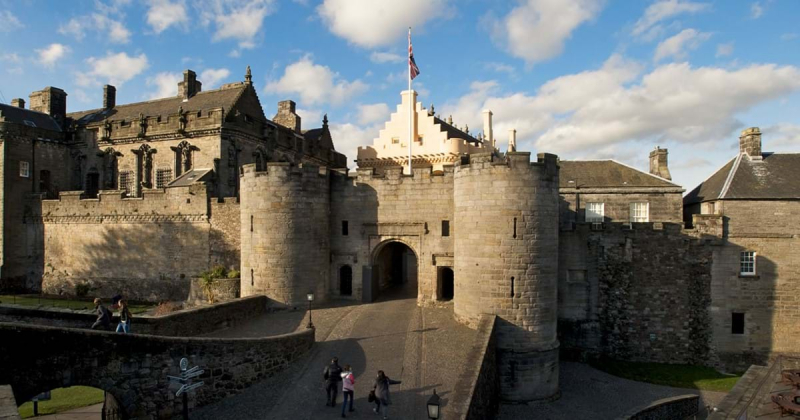
Photo: historicenvironment.scot 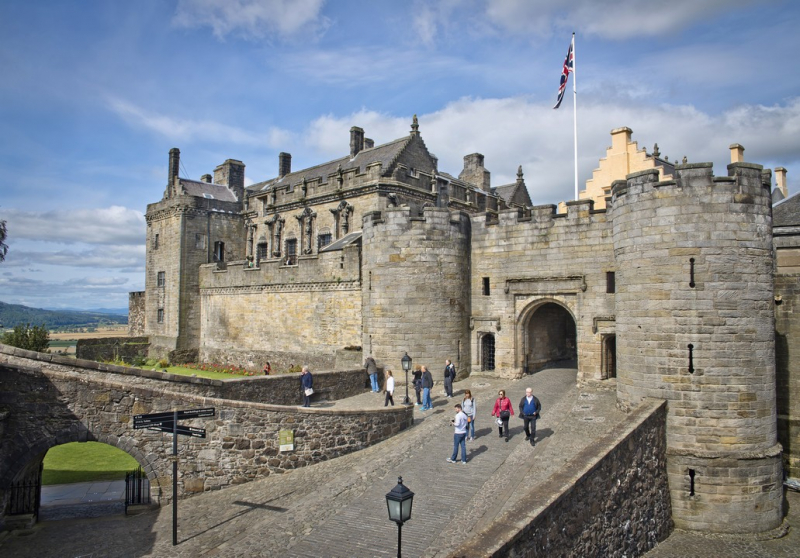
Photo: scottishtours.co.uk -
In the Stirling region of central Scotland, close to the settlement of Doune, is Doune Castle, a medieval fortification. The Ardoch Burn falls into the River Teith in a wooded curve where the castle is situated. The Teith River's confluence with the River Forth is located there, 13 kilometers northwest of Stirling. The town of Callander is located upstream, 13 kilometers farther to the northwest, near the edge of the Trossachs and the Scottish Highlands.
According to recent studies, Doune Castle was initially constructed in the thirteenth century, probably damaged during the Scottish Wars of Independence, and then rebuilt in its current form by Robert Stewart, Duke of Albany, the son of King Robert II of Scotland and Regent of Scotland from 1388 until his death, in the late 14th century. The entirety of Duke Robert's fortress has remained mostly unaltered and unaltered, and it has long been believed that this construction phase is what gave rise to the entire castle.
Doune represented modern notions of what a royal castle construction should be because of the rank of its creator. Although only the northern and north-western structures were finished, it was intended to be a courtyard with ranges of buildings on either side. The Lord and his family's quarters are in a big tower house over the entryway, while the kitchen and guest quarters are in a separate tower.
Location: Doune, Stirling, Scotland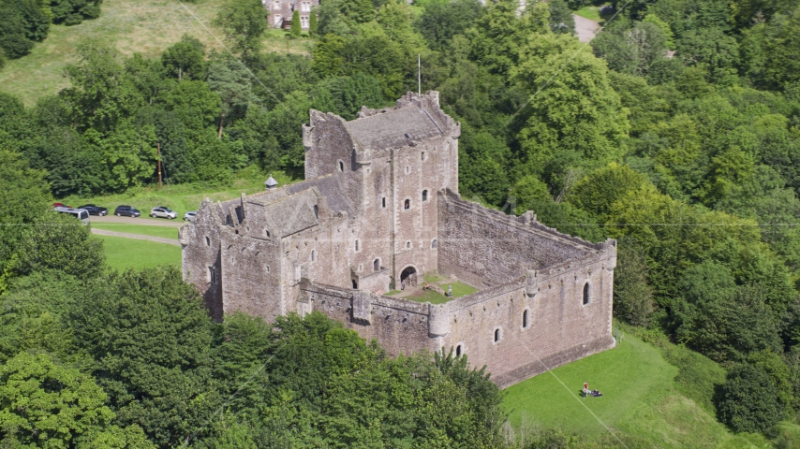
Photo: axiomimages.com 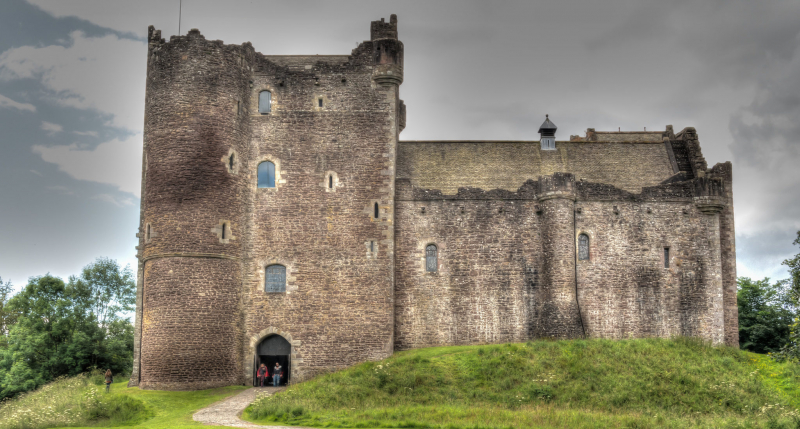
Photo: highlandtitles.com -
In Scotland's border region, Hermitage Castle is a castle that is mostly in ruins. Historic Scotland is in charge of looking after it. Due to its past and current appearance, the castle has earned a reputation as one of Scotland's most ominous and eerie fortresses.
According to legend, Nicholas de Soulis constructed Hermitage Castle in the characteristic Norman Motte and Bailey style, perhaps around 1240. It remained in his family until around 1320 when his descendant William de Soulis forfeited it due to alleged witchcraft and King Robert I of Scotland's attempted regicide. According to legend, Soulis's tenantry captured him and had him executed by being boiled alive in the molten lead at the neighboring Ninestane Rig (a megalithic circle). In reality, he passed away in Dumbarton Castle as a prisoner. According to legend, Redcap Sly, de Soulis's familiar spirit, haunts Hermitage Castle.
The Scott family owned the castle until 1930 when it was given to the nation for preservation. It is now looked after by Historic Environment Scotland, a Scottish Government executive department, and is accessible to tourists every year from 1 April to 31 October. During the winter, it is closed. The castle is classified as a scheduled monument together with a number of subsidiary structures.
Location: Near Newcastleton, Roxburghshire, Scotland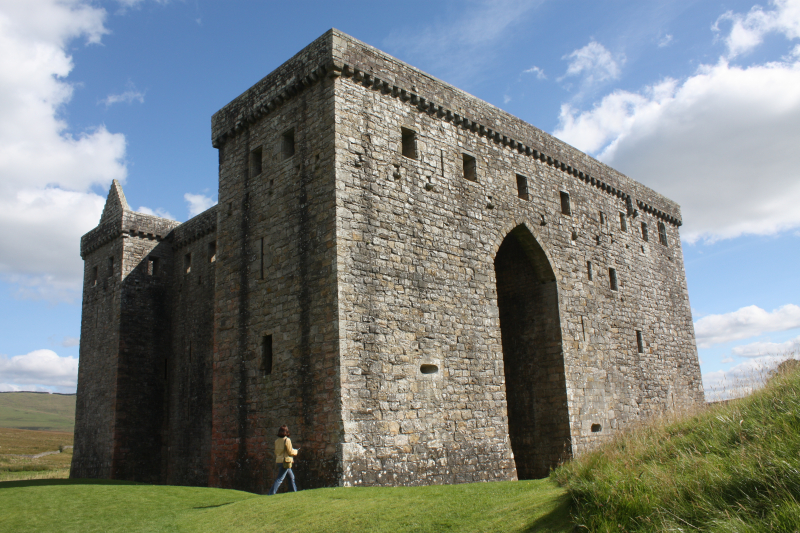
Photo: wikipedia 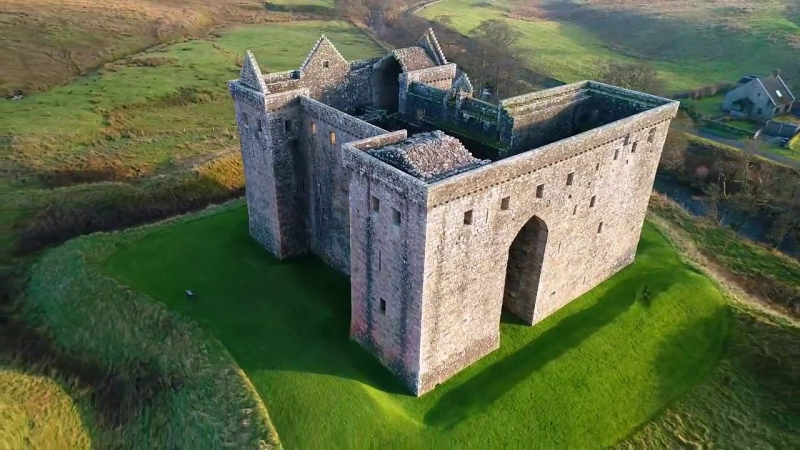
Photo: youtube.com -
Fortress Sinclair On Scotland's Caithness coast, 3 miles north of Wick, is a place called Girnigoe. It is regarded as one of the clan Sinclair's early seats. Two castles' ruins may be found there: the early 17th-century Castle Sinclair and the 15th-century Castle Girnigoe. They've been given the status of the scheduled monument.
William Sinclair, 2nd Earl of Caithness, constructed the first Castle Girnigoe, most likely between 1476 and 1496, but undoubtedly before his defeat at the Battle of Flodden in 1513. The castle may have been constructed on the remains of an earlier fortification, according to some evidence.
John Sinclair, Master of Caithness, was detained at Castle Girnigoe in 1577 by George Sinclair, 4th Earl of Caithness, who suspected him of inciting rebellion. He was imprisoned there for seven years, during which time his father gave him a diet of salted meat and no liquids, leading to his eventual thirst-induced insanity. In December 1594, Girnigoe was the location of the insurgent Earl of Bothwell. Castle Sinclair Girnigoe is one of the best castles in Scotland to visit.
Location: Wick, Caithness, Scotland
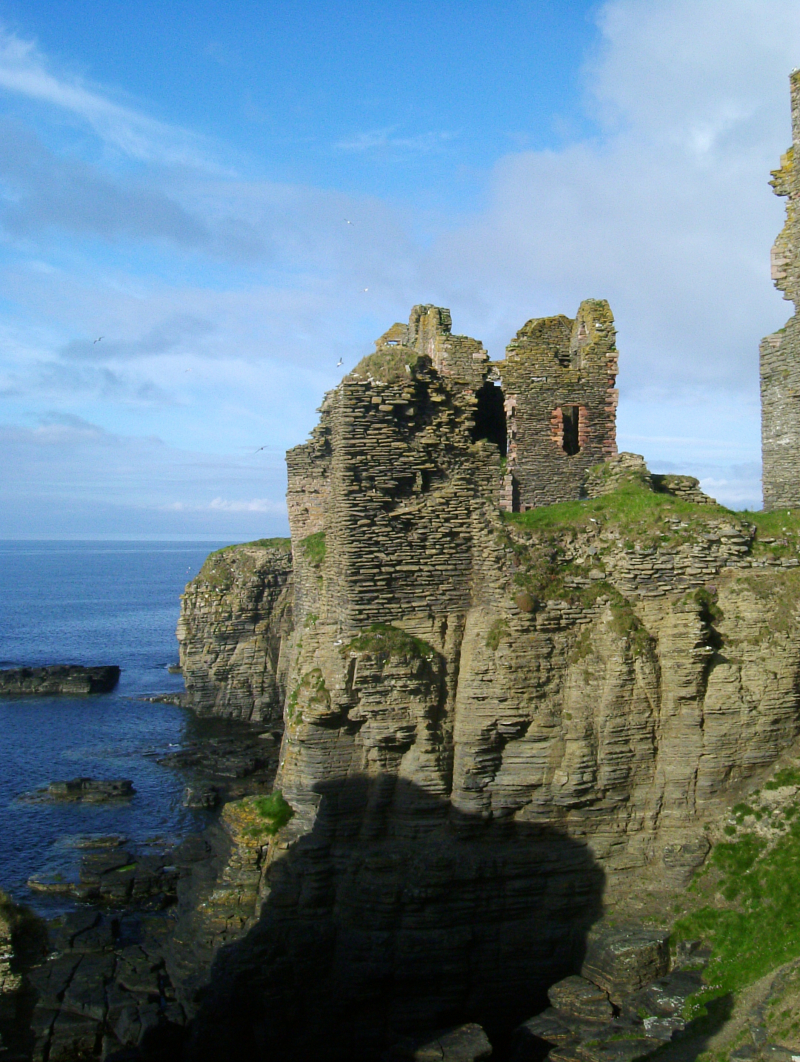
Photo: wikipedia 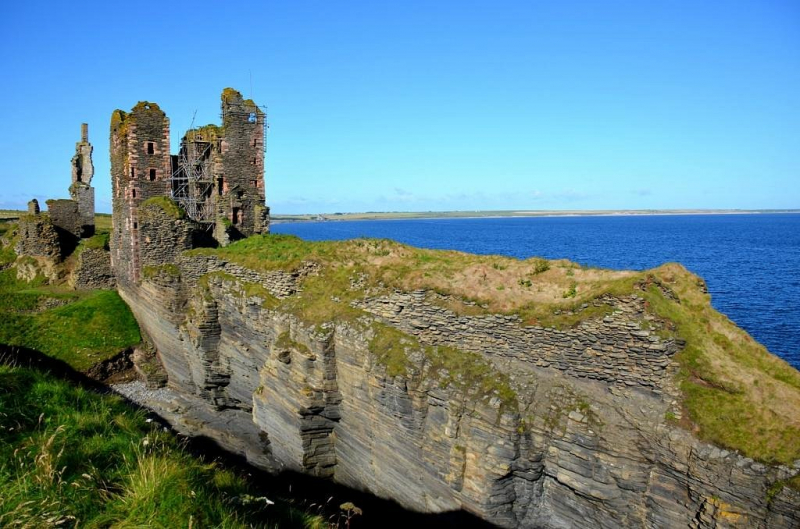
Photo: tripadvisor.co.uk -
A walled garden built in the early 17th century can be found at Edzell Castle, a 16th-century ruin. It is situated in Angus, Scotland, adjacent to Edzell and about 8 kilometers north of Brechin. David Lindsay, 9th Earl of Crawford, who started construction on Edzell Castle around 1520, enlarged it under the direction of his son Sir David Lindsay, Lord Edzell, who also designed the garden in 1604. The castle was designed, built, and used more like a country residence than a defensive fortress, and it saw little military combat.
English troops briefly seized it in 1651 when Oliver Cromwell invaded Scotland. It was sold by the Lindsay family in 1715, and the Earl of Dalhousie eventually acquired it. It was turned over to the government in the 1930s, and today Historic Environment Scotland operates it as a tourist destination. The original tower house and a series of buildings arranged around a courtyard make up the castle. The nearby Renaissance walled garden features elaborate relief carvings and is the only one of its kind in Scotland. It was replanted in the 1930s and is thought to have ties to esoteric religions like Freemasonry and Rosicrucianism.
Location: Near Edzell, Angus, Scotland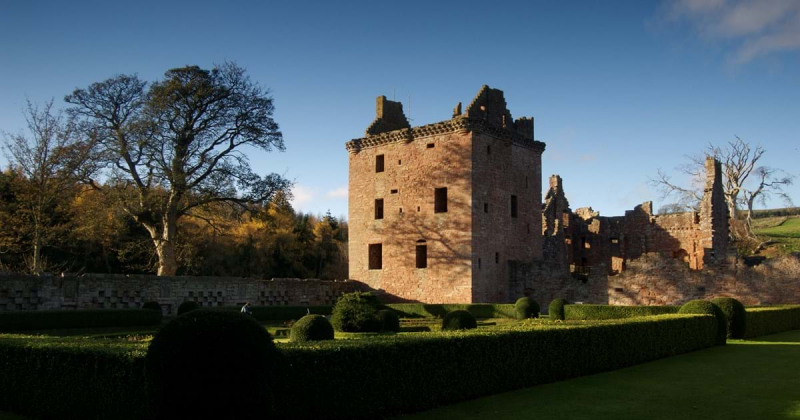
Photo: historicenvironment.scot 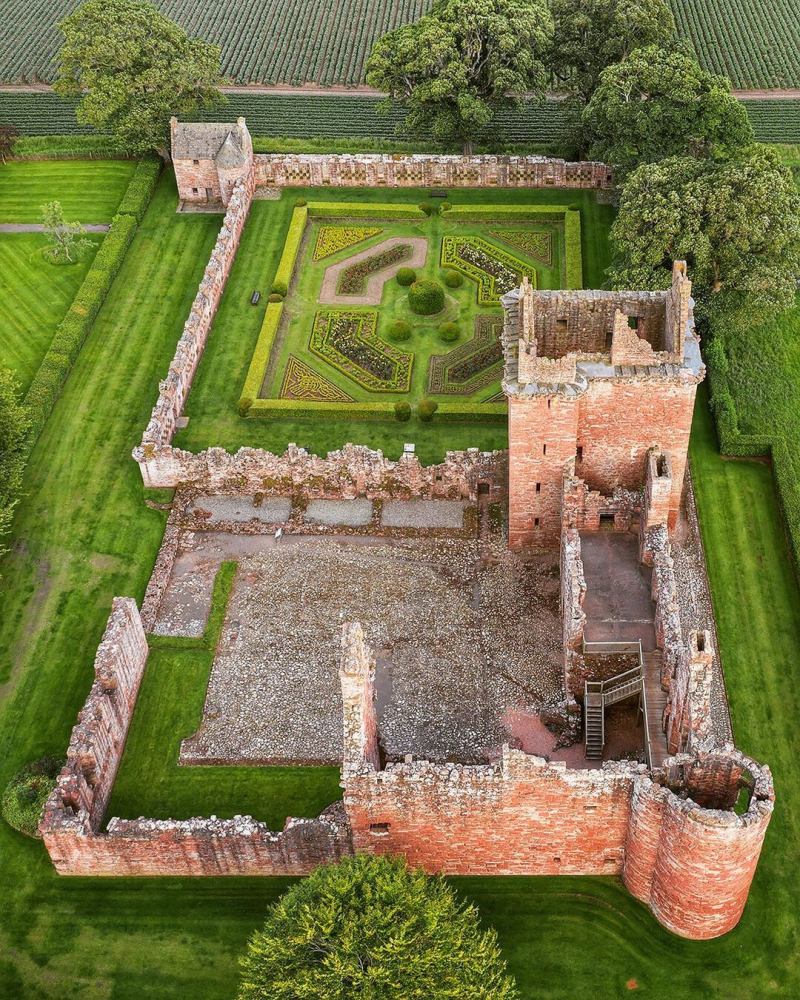
Photo: hiddenscotland.co -
The next position on the list of the best castles in Scotland to visit is Dunottar castle. About 3 kilometers south of Stonehaven, Scotland's north-eastern coast is home to the wrecked medieval fortification known as Dunnottar Castle. Although the majority of the remaining structures date from the 15th and 16th centuries, the site is thought to have been fortified in the Early Middle Ages. Due to its advantageous location and formidable defenses, Dunnottar has been a significant figure in Scottish history up until the Jacobite uprisings in the 18th century.
The Honours of Scotland, the Scottish crown jewels, were kept concealed in Dunnottar in the 17th century from Oliver Cromwell's invading army. Earl Marischal's residence since the 14th century, Dunnottar fell into decline after the last Earl lost his titles by supporting the Jacobite uprising in 1715. The castle has been open to the public since the 20th century when it underwent restoration.
The castle's remains cover an area of 1.4 hectares and are encircled by sheer cliffs that descend 160 feet to the North Sea. The headland and the mainland are connected by a small strip of land, along which a steep walk ascends to the gatehouse. The 14th-century tower house and the 16th-century palace are just two of the castle's many structures. Twelve of the buildings on the property, including Dunnottar Castle, were listed buildings.
Location: Near Stonehaven, Aberdeenshire, Scotland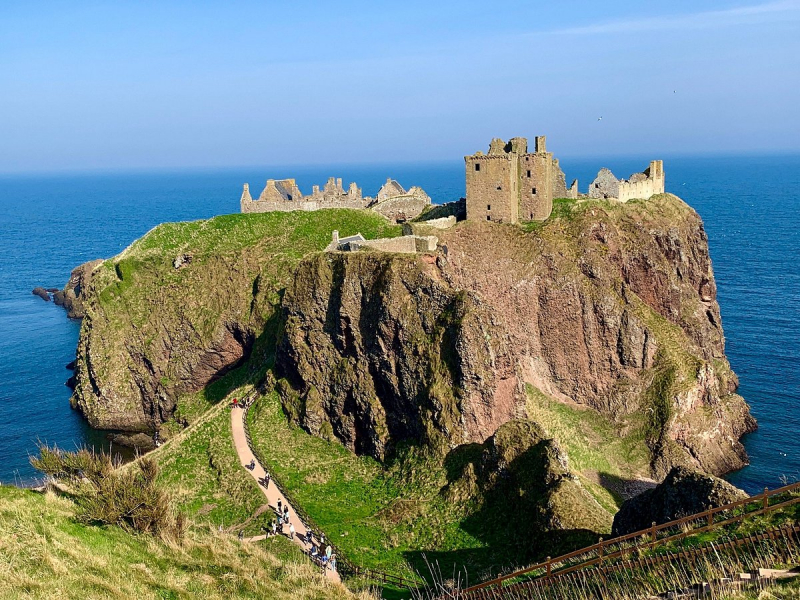
Photo: tripadvisor.com.vn Video: https://www.youtube.com/watch?v=k-9vqzgYCuA













